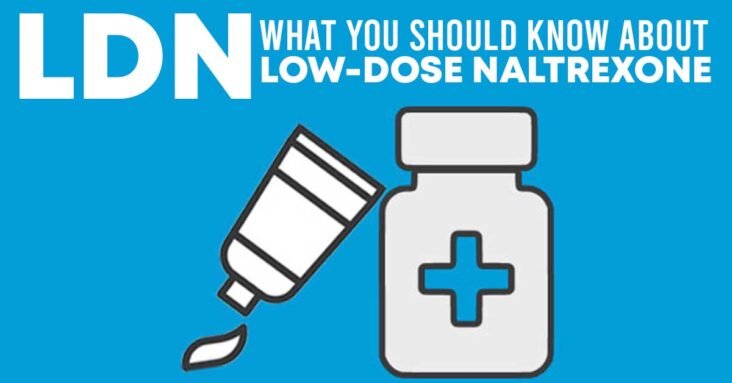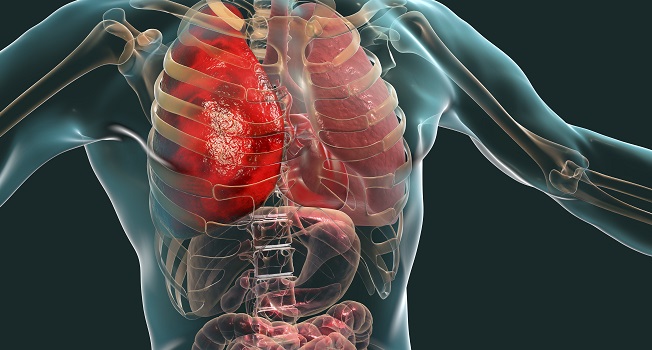Click Here to Download this Blog Post – Low-Dose Naltrexone
The use of Low-Dose Naltrexone is recent and has been shown to be effective. Titrating from 1 mg to 4.5 mg daily is typically effective (the maximum dose to remain “low-dose” is 8 mg per day) [[1]]. Low-Dose Naltrexone’s paradoxical effect on the mu-Opioid receptor of increasing the analgesic effect of Opioids has been reported in the literature for decades [[2]]. It also reduces tolerance to Opioids [[3]]. Suppressing the release of proinflammatory substance from Microglia in the Central Nervous System, and inhibition of Mast Cells which uninhibited may release too much Histamine which further stimulates Microglia and other cells in the periphery to release proinflammatory cytokines may be helpful [[4]]. For example, in the gut in the presence of inflamed Endothelium, less Histamine may reduce the inflammation and prevent acid from penetrating into the Stomach wall. By suppressing Microglia activity, LDN may be very effective in chronic pain in EDS patients with a mix of neuralgic, nociceptive, and neuropathic pain and pain secondary to autoimmune dysfunction. LDN seems well-tolerated among patients with Fibromyalgia-like symptoms [[5]]. There are many anecdotal reports to support this, but no truly good double-blinded placebo-controlled trial. Larger trials are needed. Overall, LDN is a low risk agent to use and may be used in combination with other modalities such as in the treatment of Chronic Fatigue [[6]]. Given that fatigue is often due to Autonomic dysfunction which also promotes inflammation, LDN may have other applications as well.
Some medications, like LDN, have multiple helpful effects by acting on pain neurotransmitters, the endocrine system, and the immune system in beneficial ways. In contrast, Opioids may lower the sensation of pain in the short term but may also sensitize the nervous system and increase pain in the long term. Additionally, while it might be appropriate to take Opioids for pain relief immediately following surgery, for example, if that use progresses to weeks, studies show that continued use one year later is more likely. Risk of addiction is a significant reason why providers and patients alike are encouraged to explore alternate types of pain management, including exploring any other reasons for amplified perceived pain, including affective disorders.
The role of surrounding muscle for joint connective tissue constraint and protection correlates with the benefits of physical therapy and exercise for treatment of hEDS/HSD [[7],[8]]. Regardless of any other treatments or therapies, hEDS/HSD patients must keep moving, at least in the form of Low-and-Slow exercise.
Lately, our first choice is Low Dose Naltrexone (LDN). It is not an opioid, nor is it a cannabinoid. It is, at least in part, a powerful anti-inflammatory which more directly treats the inflammatory responses due to SE amplified by PE. LDN has proven to be very, very effective and non-addictive at those very low doses. Reading about it the higher doses states that it has a constellation of symptoms and side effects. But at no more than 8 mg, maybe 10 mg at most, none of those symptoms or side effects are expected. The only real issue is that it is currently sold only by compounding pharmacies, which may make it inconvenient. If a compounding pharmacy is not known, the local pharmacy will know where a compounding pharmacy would be. Is recommended if a patient is a chronic NSAID user as a suitable replacement.
Many hEDS/HSD patients also seek Chiropractic therapy. In general, it is not recommended. Traditional Chiropractic therapy will serve to further loosen the already loose joints and may further accelerate the onset of arthritis. However, there are Chiropractors who are specialized in hEDS/HSD and connective tissue disorders. These are highly recommended. Their procedures are more like deep tissue massage to gently realign the joints.
Arthritis is virtually inevitable with hEDS/HSD due to joint laxity. Rather than gliding smoothly over each other, the bones of the joints tend to bang into each other, causing inflammation. This inflammation is added to, and amplified by, the inflammation caused by SE; together, they accelerate the onset of arthritis. Early introduction of natural anti-inflammatories, like LDN or Turmeric or Omega-3 Fatty Acids (if pure), help to reduce inflammation and may help to delay the onset of this arthritis.
[1] Marcus NJ, Robbins L, Araki A, Gracely EJ, Theoharides TC. Effective Doses of Low-Dose Naltrexone for Chronic Pain – An Observational Study. J Pain Res. 2024 Mar 21;17:1273-1284. doi: 10.2147/JPR.S451183. PMID: 38532991; PMCID: PMC10964028.
[2] Gillman MA, Lichtigfeld FJ. A pharmacological overview of opioid mechanisms mediating analgesia and hyperalgesia. Neurol Res. 1985 Sep;7(3):106-19. doi: 10.1080/01616412.1985.11739709. PMID: 2415866.
[3] Wang HY, Friedman E, Olmstead MC, Burns LH. Ultra-low-dose naloxone suppresses opioid tolerance, dependence and associated changes in mu opioid receptor-G protein coupling and Gbetagamma signaling. Neuroscience. 2005;135(1):247-61. doi: 10.1016/j.neuroscience.2005.06.003. PMID: 16084657.
[4] Zhang X, Wang Y, Dong H, Xu Y, Zhang S. Induction of Microglial Activation by Mediators Released from Mast Cells. Cell Physiol Biochem. 2016;38(4):1520-31. doi: 10.1159/000443093. Epub 2016 Apr 7. PMID: 27050634.
[5] Partridge S, Quadt L, Bolton M, Eccles J, Thompson C, Colasanti A, Bremner S, Jones CI, Bruun KD, Van Marwijk H. A systematic literature review on the clinical efficacy of low dose naltrexone and its effect on putative pathophysiological mechanisms among patients diagnosed with fibromyalgia. Heliyon. 2023 Apr 19;9(5):e15638. doi: 10.1016/j.heliyon.2023.e15638. PMID: 37206027; PMCID: PMC10189400.
[6] Bolton MJ, Chapman BP, Van Marwijk H. Low-dose naltrexone as a treatment for chronic fatigue syndrome. BMJ Case Rep. 2020 Jan 6;13(1):e232502. doi: 10.1136/bcr-2019-232502. PMID: 31911410; PMCID: PMC6954765.
[7] Bathen T, Hångmann AB, Hoff M, Andersen LØ, Rand-Hendriksen S. Multidisciplinary treatment of disability in ehlers-danlos syndrome hypermobility type/hypermobility syndrome: A pilot study using a combination of physical and cognitive-behavioral therapy on 12 women. Am J Med Genet A. 2013 Dec;161A(12):3005-11. doi: 10.1002/ajmg.a.36060. Epub 2013 Aug 2. PMID: 23913726.
[8] Castori M. Morlino S. American Journal of Medical Genetics Part A, 2013; 161, 2989-3004






